
This isn’t a game I would have expected from Surgent Studios. Sure, anyone can make anything, but a psychological horror game seems quite far away from a mythologically inspired Metroidvania (our Tales of Kenzera: ZAU review here). Still, some of the star power behind Dead Take warrants a look. After rolling the credits moments ago, I have quite a few thoughts.
Dead Take isn’t your classic walking simulator. The team frames this game as a Psychological Horror Escape Room, which is as good a description as you’ll find. Everything takes place in first-person, which is of course the most scary of all perspectives. If something feels like it’s happening to me, it’ll not only be more immersive, but more terrifying.
You play as an actor named Chase Lowry, who has followed his friend Vinny Monroe to producer Duke Cain’s mansion. Vinny hasn’t been heard from recently, and it’s up to you to find him after calling him numerous times with no response. After the opening sequence shows you the ropes of clicking around your environment and interacting with different objects, the gates open to the large house where you’ll spend the next several hours solving Vinny’s disappearance.
Psychological horror isn’t something you stumble into doing right. Surgent Studios has surprised me with their interpretation, because they don’t rely on the usual elements to creep you out. There are jump scares, with sudden static-y audio cues blended with fuzzy faces on the screen right after you’ll enter a random room, but these are curated, not randomly thrown at you.
Where this horror salad works is in what isn’t here. The mansion is somewhat messy from the party, but otherwise a largely spotless space. It’s like a cleaning crew came in, got most of the way done, and left leaving the trash bags behind. Walking through the hallways, I always felt tension with every step. Maybe it’s just the whole, “empty house at night” shtick, but it’s effective. There’s a dread that’s been harnessed, an empty feeling in the pit of your stomach every time you enter a room waiting for something more panic inducing. Anticipation is your enemy, one that kept me on edge at all times. Oh, and there are mannequins in this game, and they suck.
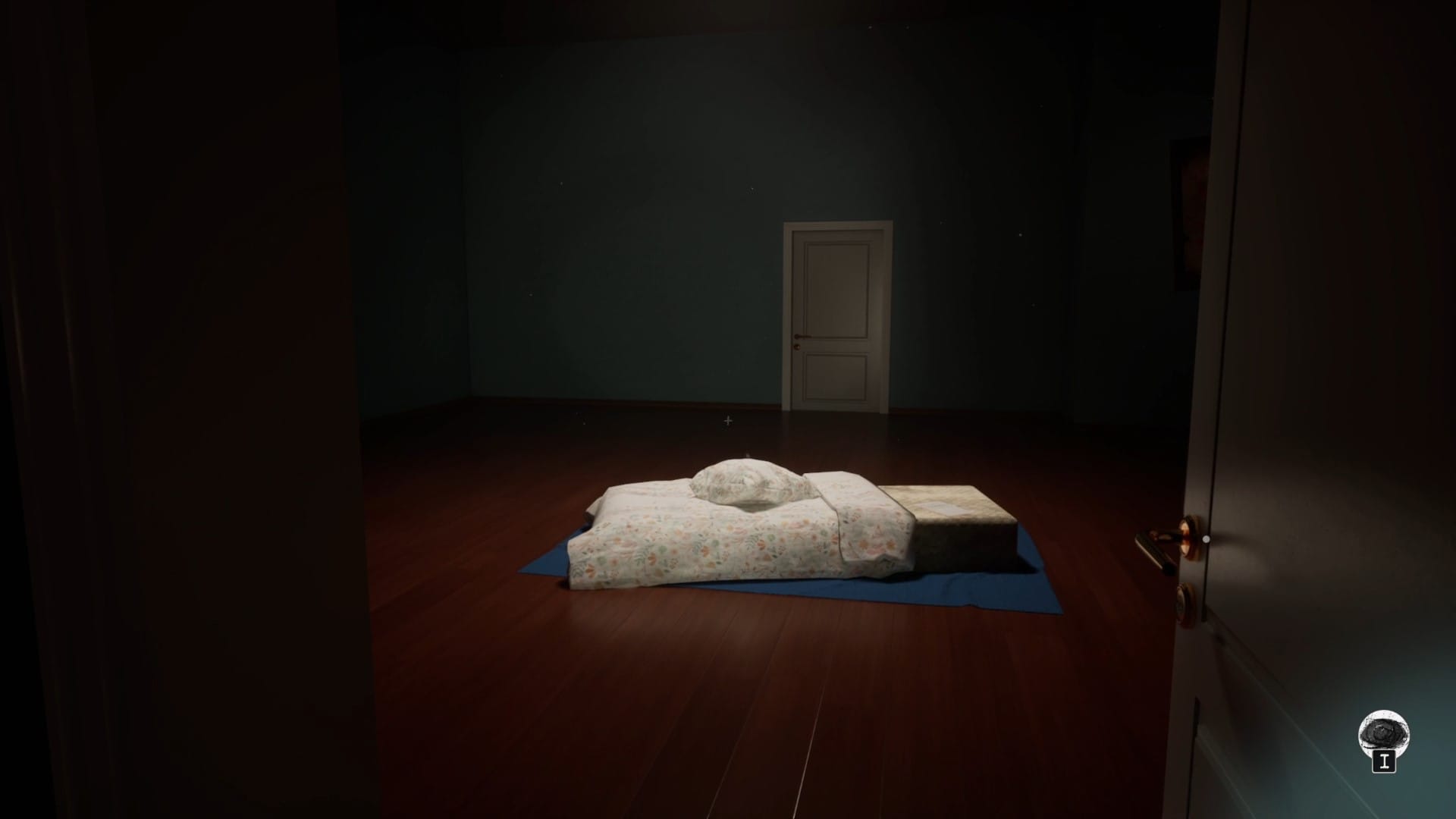
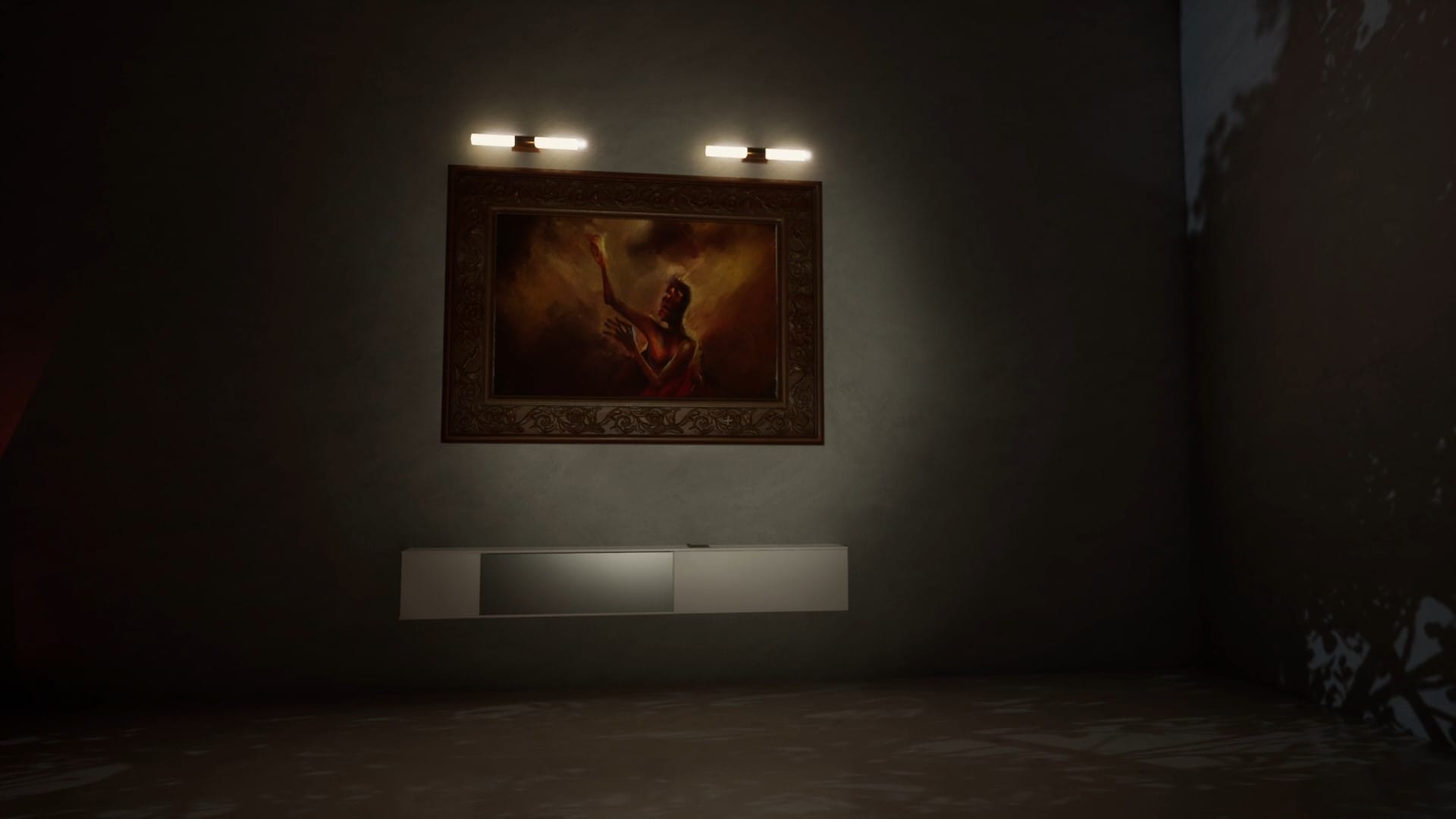
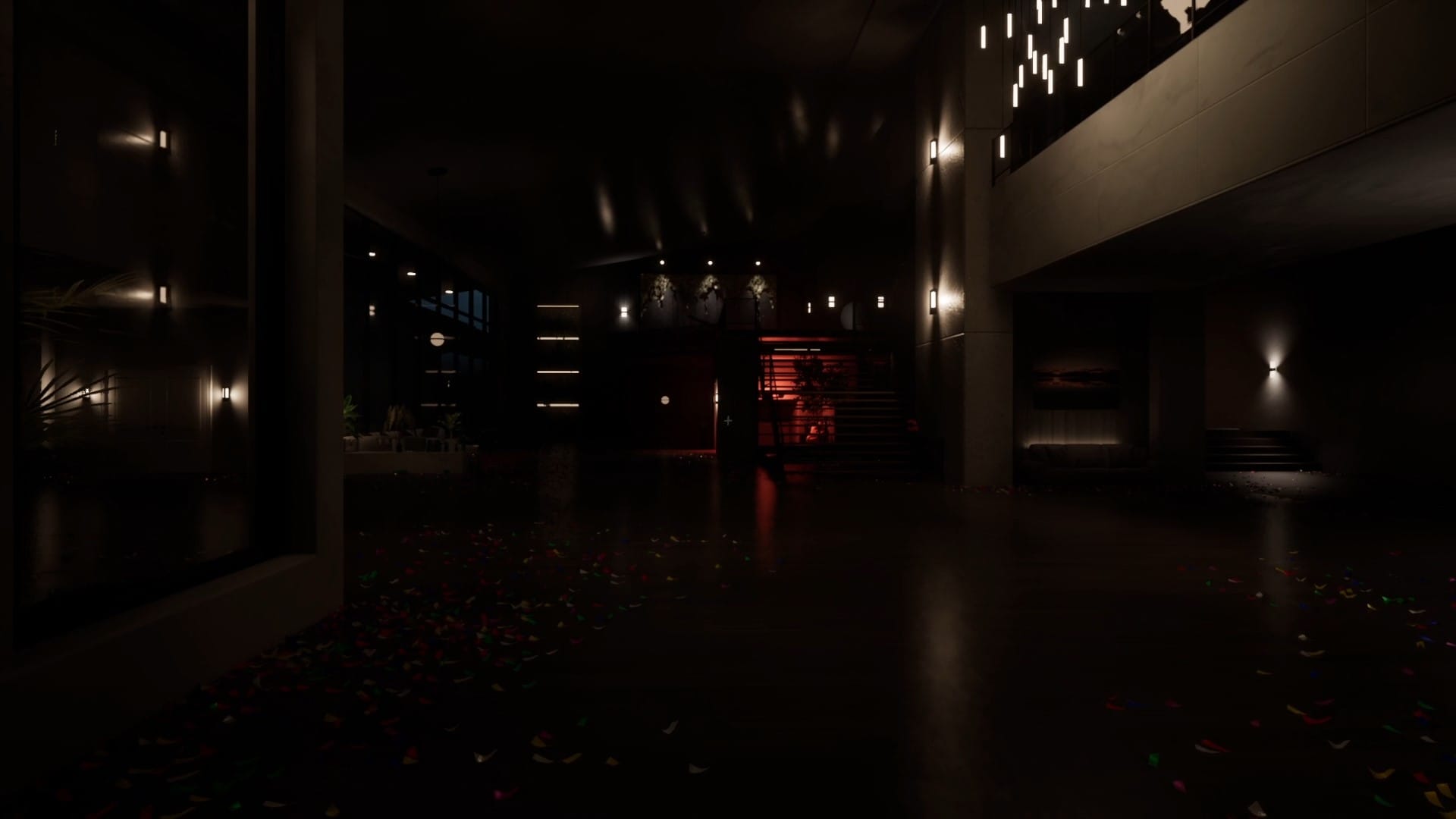
Backing this up is the sound design, which is immaculate. Dead Take recommends you wear headphones for this one, and I can certainly hear why. Having on a pair of SteelSeries Arctis Nova Pros, the silence was palpable, my own footsteps were alarming, and any noise that wasn’t directly occurring in my sightline was disconcerting. I eventually couldn’t take it – mainly after an instance where there was banging on a nearby door – and had to remove my headphones. If that isn’t a compliment to the efforts of Surgent Studios in the sound department, I don’t know what is.
While Dead Take tells an intriguing tale of loss, manipulation, and desperation, there are threads that are left unraveled, leading to a bit of a shallow story. There are some environmental storytelling elements through your phone and notes you find along the way, but it doesn’t truly make up for what’s missing. Some of this is probably on the short runtime, clocking in around four hours. It's also on the team for not committing to certain themes that should have been more prominent, but are glossed over. For example, Duke Cain is a main presence in the story, but his backstory is lightly explored and feels a tad left behind in the final act. There's opportunity for impact, but it never arrives.
Similarly, characters beyond Chase and Vinny have a few moments, but are largely backdrops on the mainstage. That said, Neil Newbown’s Chase is fantastic, and Ben Starr’s Vinny is incredible. Ben Starr, in particular, channels his inner Christian Bale at one point, with a performance I’m not likely to forget.

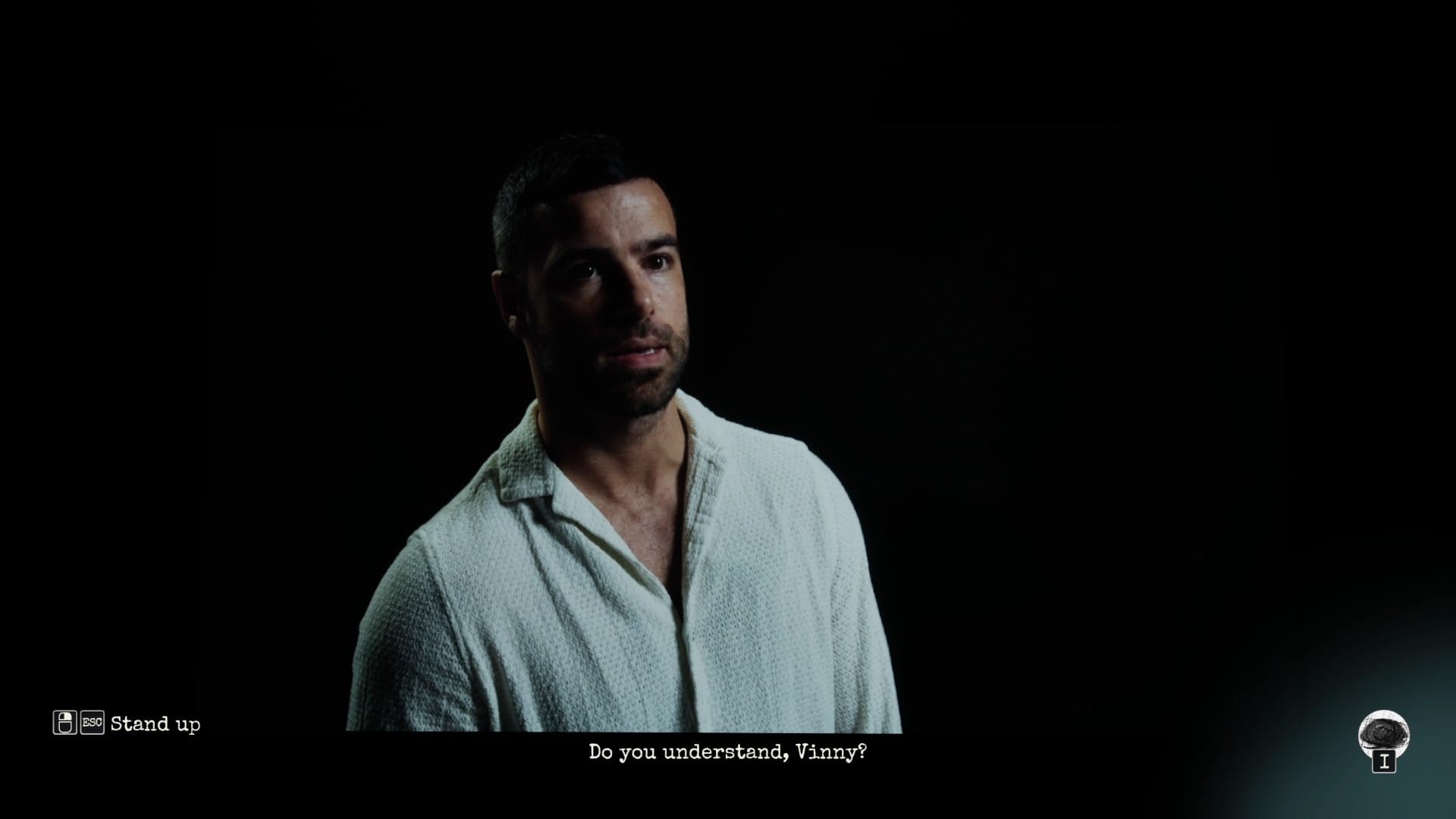
This leads into the element of Dead Take I like the most, the found footage. During your trip around the mansion, you’ll pick up flashdrives that have video on them. You’ll take these back to an entertainment room, load the footage into the camera, and then sit in the director’s chair to view them. Nothing here is CGI, every scene is the actor or actress performing in front of an actual camera. Again, this is where the star power comes in, with plenty of intense and awesome performances to view.
Once you watch these, you’re able to go and splice them together on a computer to clue you in on your next move. I never felt like it was too tough to discover what worked together, but nothing was telegraphed either. Although, one of them is spoiled by the cast trailer, so don’t watch that if you’re wanting to go in blind. Watching this new spliced footage gives you not only clues to solve puzzles, but comes with a new diorama appearing outside the entertainment doors… and you have no clue exactly who put it there.
Speaking of puzzles, the escape room aspect is fun, even if somewhat basic. Nothing here will wow you, but it works for what the game is. As you move into different rooms, you’ll be able to only interact with certain items, which does speed up the process of figuring out what is useful. Given the explorable space of Dead Take is limited to the mansion, I never felt overwhelmed with looking around either. It’s an appropriate size.
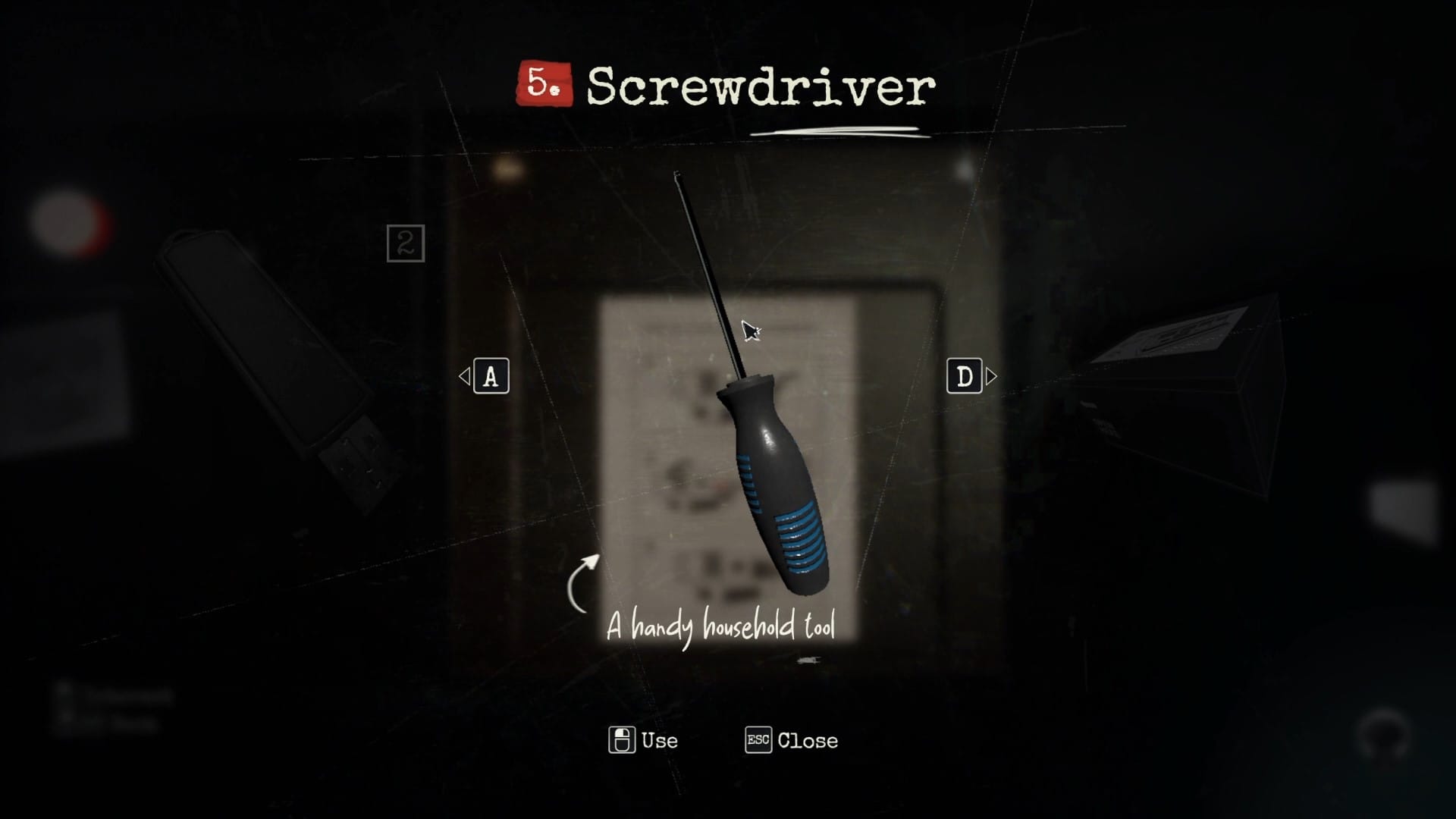
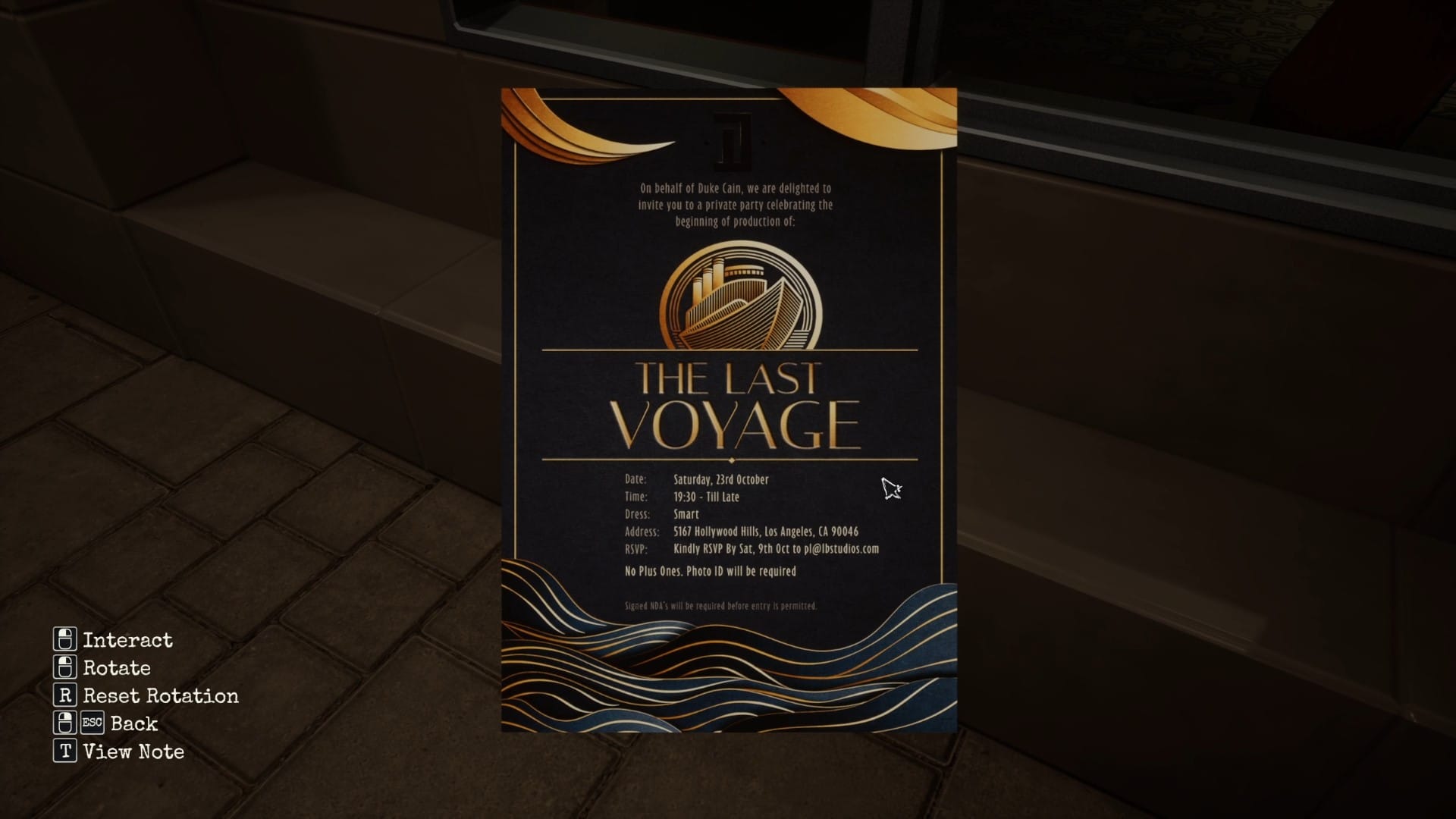
Solving puzzles isn’t too difficult. Most of your clues will be in the room you’re in, or collected along the way. You’ll look for passcodes, search for solutions by inserting items you’ve found into the equation, pay attention to notes around an area, or remember scenes from the footage that could indicate what to do next. I only had a singular instance where I hadn’t grabbed everything I’d have needed to decipher a specific puzzle, which is good for a game in this genre. For the most part, I never felt like the game held my hand in these mysteries, but it also never left me high and dry. It’s largely fair, and I appreciate that.
Visually, Dead Take is quite stunning… assuming you have a good rig to run it on. Maybe it was a few odd settings that were transferred, but moving from my NVIDIA RTX 4080 rig to my NVIDIA RTX 3080 rig resulted in some fuzzy textures and notes becoming unreadable. It was fixed with adjusting a few settings, but I do recommend going into these settings and fine tuning Dead Take to work at its best. As I said, when it’s on point, it’s on point, with the lavish mansion setting having a near real world sheen to it. While most games in this genre tend to look good given less assets and gameplay elements to hold them back, Surgent Studios has put a lot of effort into crafting Duke Cain’s abode and it pays off handsomely in the aura exhibited.
This has been a tough review to write, because despite effusive praise for the tremendous atmosphere, I struggle to find the feature that elevates Dead Take to a special title. I really love the found footage angle, but there's not a lot of it. The story never gets a chance to develop like it could have during its runtime. At only $14.99, I can forgive these faults, but I fail to see where it graduates from good to great.
Dead Take
Good
Dead Take succeeds in harnessing terror by means of anticipation and stellar environmental horror. The performances of the cast are on point, delivering interesting themes, but that aren’t always tied up in the end. Even with a bit shallow of a narrative, Dead Take kept me on my toes from beginning to end, a commendable effort from Surgent Studios.
Pros
- Incredibly creepy setting
- Lead performances are phenomenal
- Good mix of understandability and vagueness in puzzles
- Sharp graphics with the right settings
Cons
- Story threads and themes not fully fleshed out
- Gameplay is simply fine
- Very short
This review is based on a retail PC copy provided by the publisher.
